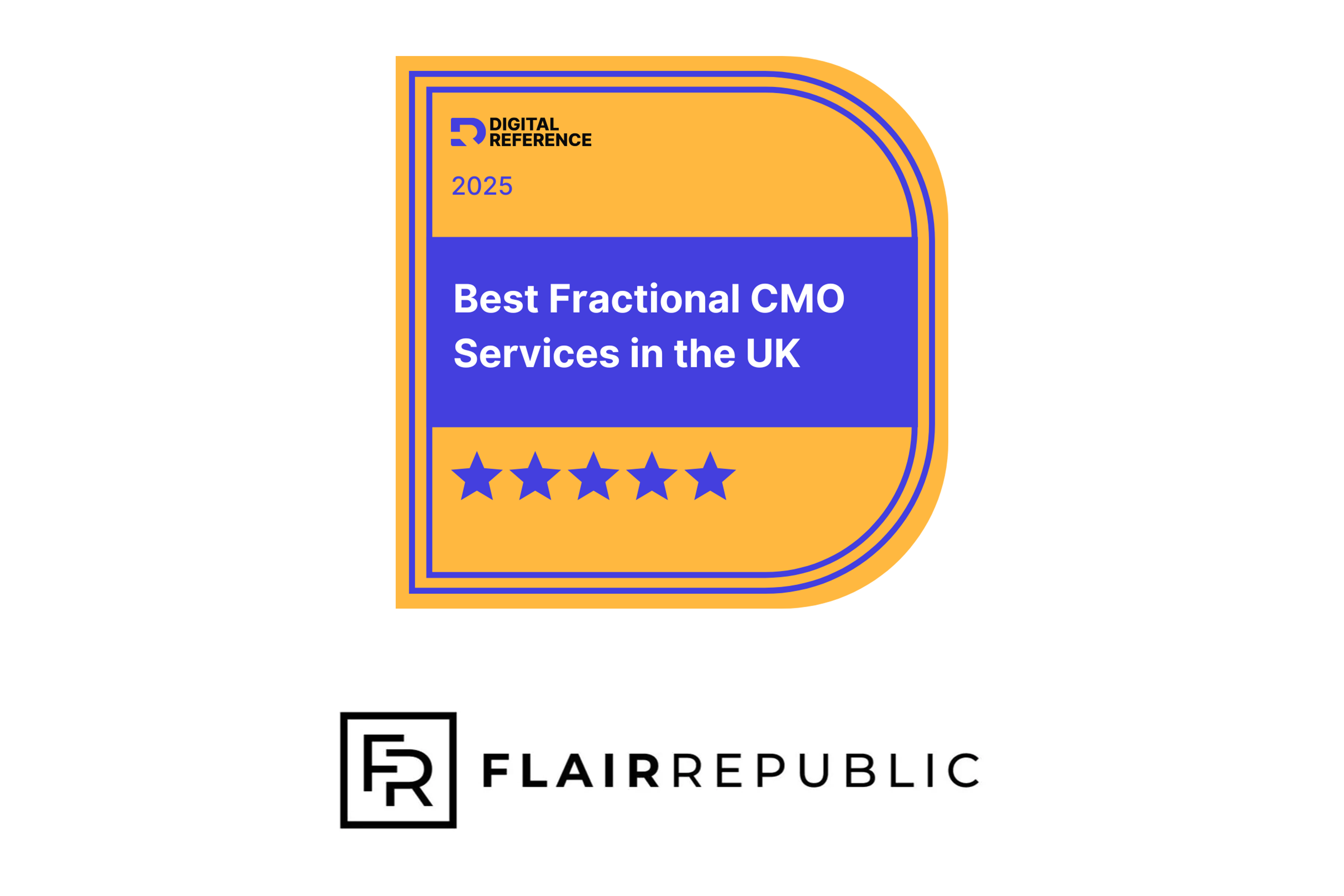
How to Create the Ultimate Marketing Strategy
Contents
A marketing plan is something every business needs. It’s a given that having a well-documented marketing strategy is the foundation for future success. Marketers who document their marketing strategy are 538 percent more likely to report success than those who don’t. This staggering statistic underscores the importance of not just having a plan, but documenting and following it rigorously.
A well-constructed marketing plan serves as a roadmap, guiding businesses through market fluctuations, consumer trends, and competitive landscapes. In this blog, we’ll delve into the key components of an effective marketing strategy and how they can lead to sustained marketing success.
The Components of the Ultimate Marketing Strategy
Data
When it comes to planning marketing strategies, it’s crucial to consider the environmental factors that impact the business both internally and externally. Data plays a key role in this process. It’s the driving force behind making informed decisions for the future. Whether you’re evaluating market trends, customer behaviour, or competitive performance, data provides the empirical evidence needed to justify your choices. Data-driven marketing doesn’t just enhance decision-making – it also reduces risk by providing a clearer picture of the landscape.
Businesses that fail to prioritize data in their marketing strategy often operate on assumptions, which can lead to misguided efforts and poor results. Without conducting thorough research and analysing data, the decisions you make lack substance. It’s important to rely on data to support your decisions and ultimately achieve better results. Leveraging tools like Google Analytics, CRM systems, and social media insights can give you a granular understanding of your audience, enabling you to craft strategies that resonate and convert.
Target Markets
When planning your marketing strategy, it’s crucial to use data to identify your target markets. Understanding who your audience is and why they would be interested in your product or service is key. Rather than casting a wide net and trying to appeal to everyone, a well-defined target market allows you to tailor your messaging to resonate with specific demographics, psychographics, and behavioural traits.
Identifying your target market involves segmenting your audience based on factors such as age, gender, income, location, and interests. This segmentation enables you to create personalised marketing campaigns that speak directly to the needs and desires of different customer segments.
Personalisation isn’t just a nice-to-have; it’s a necessity. Consumers are bombarded with marketing messages daily, and a generic approach simply won’t cut through the noise. Instead of trying to reach everyone, honing in on a specific target audience allows you to craft messages that speak directly to their pain points and motivations, increasing the likelihood of engagement and conversion.
Pricing, Positioning and Branding
A pricing strategy determines how your product or service will compare to the competition. This aspect of your marketing strategy is more than just setting a price—it’s about positioning your brand within the market. For example, are you aiming to be a luxury brand with premium pricing, or are you focusing on affordability to capture a larger share of the market? The pricing strategy you choose will shape your overall brand perception. A well-crafted pricing strategy communicates value to your customers and influences their purchasing decisions. It also plays a critical role in your brand positioning.
Positioning is about how your brand is perceived in the minds of consumers compared to competitors. Are you seen as innovative, reliable, or cost-effective? Your positioning strategy will determine the messaging and tone of your marketing campaigns, as well as how you differentiate your brand from others. Consequently, this develops the marketing and branding messaging, which communicates how your brand is perceived. Your branding efforts should align with your positioning strategy, ensuring consistency across all touchpoints, from your website and social media to your packaging and customer service.
Budget
We can come up with many extravagant and niche ways of growing our business, but everything falls down to budget. Budget is a crucial aspect of creating the ultimate marketing strategy. It determines the level of differentiation from competitors and shapes the brand perception. Additionally, budget allocation helps decide whether to focus on existing markets or venture into new ones. A well-planned budget allows you to allocate resources effectively, ensuring that your marketing efforts are both efficient and impactful.
By breaking down marketing activities into monthly budgets, tracking ROI and KPIs becomes possible, enabling effective resource management. Planned marketing activities need to be broken down into monthly budgets to determine how this will be spent over each month and what it will be spent on. Having this in place also allows you to track your return on investment (ROI) and other key performance indicators (KPIs).
Monitoring these metrics helps you understand what’s working and what isn’t, allowing you to adjust your strategy accordingly. An underfunded marketing campaign can fall flat, failing to reach the intended audience or achieve the desired results. On the other hand, overspending without proper planning can lead to waste and inefficiency. Striking the right balance is key to maximising your marketing ROI.
Marketing Channels
Another critical component of your marketing strategy is the selection of marketing channels. The channels you choose to promote your products or services will largely depend on your target audience and budget. Traditional marketing channels, such as TV, radio, and print, can still be effective, especially for reaching older demographics or local markets.
However, in today’s digital age, online marketing channels have become increasingly important. Social media platforms, email marketing, content marketing, and search engine optimisation (SEO) are powerful tools that can help you reach a broader audience at a lower cost.
Each channel has its own strengths and weaknesses, and the key to a successful marketing strategy is finding the right mix of channels that align with your goals and target audience. For instance, if you’re targeting millennials or Gen Z, social media platforms like Instagram, TikTok, and YouTube might be more effective than traditional media. On the other hand, if you’re targeting B2B customers, LinkedIn and email marketing might yield better results. Diversifying your marketing channels can also help you mitigate risks and reach different segments of your audience.
A Contingency Plan
If we take a look at a few years ago, how many people would have predicted COVID-19? Having a contingency plan means you take into consideration risk management, and the factors that may alter your marketing plan in the near future. A contingency plan allows you to be proactive and take an agile approach to your marketing strategy. By putting in place measures to overcome the impact of any identified risks, you’re ensuring quality control and increasing the probability of meeting marketing targets.
Contingency planning involves identifying potential risks, such as economic downturns, changes in consumer behaviour, or supply chain disruptions, and developing strategies to mitigate them. This could involve diversifying your product offerings, adjusting your pricing strategy, or reallocating your marketing budget to focus on more stable markets. In a rapidly changing world, the ability to adapt and pivot quickly is crucial to maintaining your marketing momentum and achieving long-term success.
Conclusion: Leveraging Your Marketing Strategy
It’s clear that there’s a number of factors to consider when planning your marketing strategy. Having the right level of research and expertise is crucial to the success of any campaign. A well-crafted marketing strategy not only outlines the steps you need to take to reach your goals, but also provides a framework for measuring success and making adjustments along the way.
By focusing on data, understanding your target market, carefully considering your pricing and positioning, allocating your budget wisely, selecting the right marketing channels, and having a contingency plan in place, you can create a marketing strategy that drives results. If you want to take your marketing strategy to the next level, get in touch with us to see how we can help boost your marketing efforts. We offer affordable UK fractional CMO services to create and execute high-performing marketing strategies.






